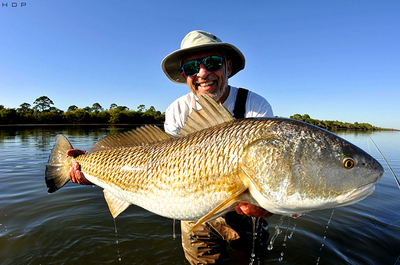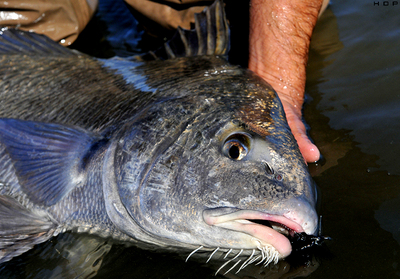Stats 101
A reader by the name of Tim shared this with me, responding to my claim of fish populations being 2% of what they were pre-Columbus:
"Thanks for the flashback to Stats 101, probably my least favorite college class of all! The two things I retained out of that class however are that statistics can be twisted to support whatever agenda you choose, and that 96.2% of all statistics are made up on the fly.
"Do you subscribe to the Nature Journal? They have numerous scientific articles which come close to supporting your statement about the population decline.
"They lean towards a tighter timeline for some species such as Tuna, where they claim 90% population drop since the 1950s. Personally I would think the steepest part of the curve would be directly proportional to population increases and technological advancements (in the ships as well as tracking). We truly are becoming a skilled predator. Special thanks should also go to the scientists for providing migratory information to the hunters.
"I was thinking that may have been where you came across it. I more likely suspect it was from an author that could no more cite his source than you could…. But personally, I don't care. I took it for the "spirit" of the statement and joined with my basic understanding of the theories of resource management to know that even if you were off a few thousand fish … it still reflects a serious problem.
"I've had several conversations with Miccosukee and Seminole Indians who describe an 80% – 90% drop in the overall bird population in the Glades over the past two or three generations.
"I think anyone who denies these things is an idiot. Hell, I remember a far more pristine Florida Keys in my youth, and I am only 40.
"Kudos to Professor Silky, but I hope he didn't miss the "spirit" of the statement.
"I have a theory that I think would work ….. BAN FROZEN FISH ! If there is only enough caught that could be eaten before it spoils then maybe we could put a dent in overfishing."
Flynutt
My involvement with photography began as a child. My father had a professional B&W photo lab in which I worked. My first camera was a Kodak Vigilante. I've been studying how to make better photos most of my life. I have run literally miles of 35 mm film through a long succession of camera bodies. As a photographer though, I am no better than competent, maybe bordering on good.
My friend Rick DePaiva (Flynutt, HDP) bought his first camera three or four years ago. He's undeniably brilliant behind a lens. On one hand it irritates the daylights out of me that I could work on it a lifetime and not be as good as someone who just picked it up. On the other hand I'm happy for him. He's a close friend, I love him, I should be happy for him! Besides, that's just how life is.
Below are a few samples of his work. See more at De Paiva P-BASE. It's worth the time to take a look. Be careful- a lot of it is REAL warm to the touch.
The Johnson Minnow
Last week reader Eddie Colbert sent me this question: "I am impressed by how many fish your clients catch on Johnson Spoons. Any tips on how to fish them effectively?"
This could be an entire magazine article but I'll keep it short.
First, I use 1/8 and 1/4 ounce Johnson Minnows in both gold or silver finish, interchangeably. I don't see that size or finish makes any difference to the fish.
Tie the lure directly to the leader with a clinch knot. I use braid so line twist isn't a problem.
The spoon can be used effectively both blind casting and for sight fishing. Yes, we are talking about redfish here. When blind casting cast in a fan pattern and reel it a little faster so you can cover more water. When sight fishing make sure it goes by the end with the mouth.
It can be reeled steadily and it will work. Long-time fishermen will always add action by working the rod tip.
When fish are being tough it can be bounced along the bottom, even through the grass sometimes, like a jig. Certainly if I see a fish following and looking like he doesn't want to commit I stop reeling and let it flutter to the bottom. The fish will definitely pick it up while it's motionless there.
I never add a trailer to it. It cuts the casting distance and I've never seen the need. The spoon works fine without one.
You need to catch a few fish with it to get some confidence, to let the spoon gain your trust. If you give it the opportunity it will.
Fishing Report
Wednesday I jumped into the chariot and towed the Mitzi to Satellite Beach. I had reservations at Chez Smith, always an entertaining evening. Thanks Rod and Karen for putting me up, for putting up with me.
Thursday Rod and I drove to Grant. Nice new Brevard county boat ramp there, didn't know they were building any more. There's a sign there prohibiting fish cleaning. What? It's a boat ramp, where am I supposed to clean fish?
We met Tom Raftican, launched the boat, and went fishing. It was pretty slow everywhere we tried except off the tip of the south jetty, where the bluefish were stacked up in a big way. Nothing exciting, just the one pound size bluefish on almost every cast.
The boat was on the trailer at 1 PM.
To me, there is nothing that says "Adventure coming right up" more than the end of a canoe visible through the windsheild while I'm driving. Whitewater, camping, fishing, that's what the canoe says to me. That sight of a canoe on the roof has greeted me before so many good times, in Massachusetts, Connecticut, New York, New Hampshire, Vermont, Maine, North Carolina, and of course here in Florida. I saw it again Thursday morning, and I smiled about canoe-related memories for the duration of the drive.
I met Ricky and we drove to KARS park, launched the Dagger. We hadn't gone very far before we started spotting tails. I hopped out and started casting. The drum would spot the fly, turn on it, follow it, and not take. I had good shots at 15 or so, and nary a bite.
Ricky decided to put down the camera and try a fishing rod. We were both wading, casting to fish when he called out, "I think I was just hit by a ray." What, are you kidding me? I'm on a fish here!
He wasn't kidding. Ankle, right leg.
The first aid kit came out. I cleaned the wound and checked for barb residue. Fortunately there was none. Ricky was sucking in his breath, in obvious pain. Hot water kills the pain I'd read. We didn't have any hot water. "Hey Ricky, you want me to pee on that?" He didn't.
We went back to KARS park. Rick ended up under a hot shower at the campground. As advertised, the hot water made the throbbing pain stop.
While I was waiting for him to come back I had packed everything up. I was just letting the canoe drain and dry a bit before putting it back on the roof of the van. The sun was warm, the water like glass. Rick came back feeling better and said, "Look at this weather! I think we should go back out. I'll paddle you around." SOLD!
I got three fish, all on a black bunny booger. The first was a 20 pound black drum. The second was a four pound seatrout. The third was a 20 pound redfish. Managed to break an Orvis rod on the drum, a minor problem after the ray. We had an exquisite afternoon.
After loading all the stuff back onto/into the van we headed to Leoncito for some enchiladas. It was good to see Ricky, to fish with him. I was sorry he got hit by the ray, but it could have been so much worse. All's well that ends well.
Now I have another adventure to remember the next time I see the canoe on the roof of the car.
Monthly Fly Contest
Vince Staley has sent in a submission with one of my old stand-by flies, the Homer Rhodes Shrimp Fly. Good taste, sir!
Thread: fine mono (so you can over wrap the cactus chenille)
Hook: Mustad 34007 Size: 1/0
Head: Jiggy Bead
Tail : Rainbow Flashabou under 2 pink & 2 blue dyed grizzly hackles tied in deceiver style.
Tie in two very webby white hackles.
Tie in pearl cactus chenille and wind forward to bead and ball up the chenille inside the bead to hold it in place. Advance the thread to the bead head tie off and clip the excess chenille.
Palmer the white hackles to 1/8 inch from the head, tie off and clip excess. Tie in a shorter red hackle for the gills, palmer and tie in and clip excess. Tie in one webby white hackle, palmer and finish the fly.
When this fly is stripped the webby hackle pulses, exposing and concealing the red gills. The tail hackles quiver and the fish find it irresistible. This design can be tied all white, all black, blue/chartreuse, or grey for the mullet run. Very simple tie but one that has caught a wide variety of fresh & saltwater fish. To fish shallow water use either 3/16th silver bead or eliminate the bead.
Here are the rules- submit your fly by email, before the end of the current month, to john@spottedtail.com. The submission must have a clear photo of the fly and instructions on how to tie it. Instructions on how to fish it will also be considered in the judging.
The judge's decision is final. Here's a hint- the judge likes simplicity.
Winners will receive an autographed copy of a book by former world famous outdoor writer John Kumiski, woo-hoo, AND will get to see their fly featured on the Spotted Tail website for a month.
How could it get any better, I ask? A win-win for everybody.
Get those submissions coming!
Please- Embrace simplicity.
Life is great and I love my work!
Life is short- go fishing!
John Kumiski
http://www.spottedtail.com/
All content in this blog, including writing and photos, copyright John Kumiski 2010. All rights are reserved.


